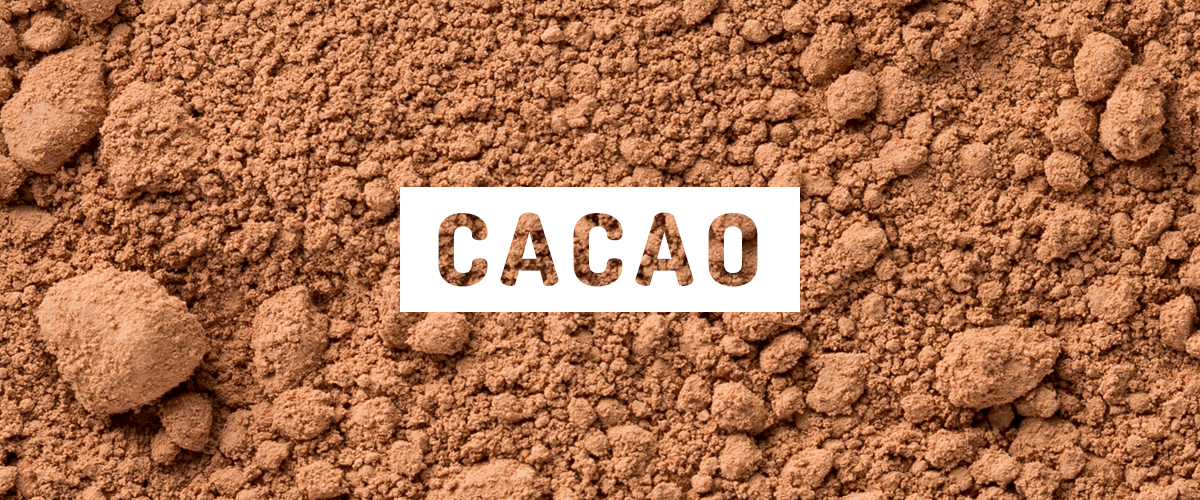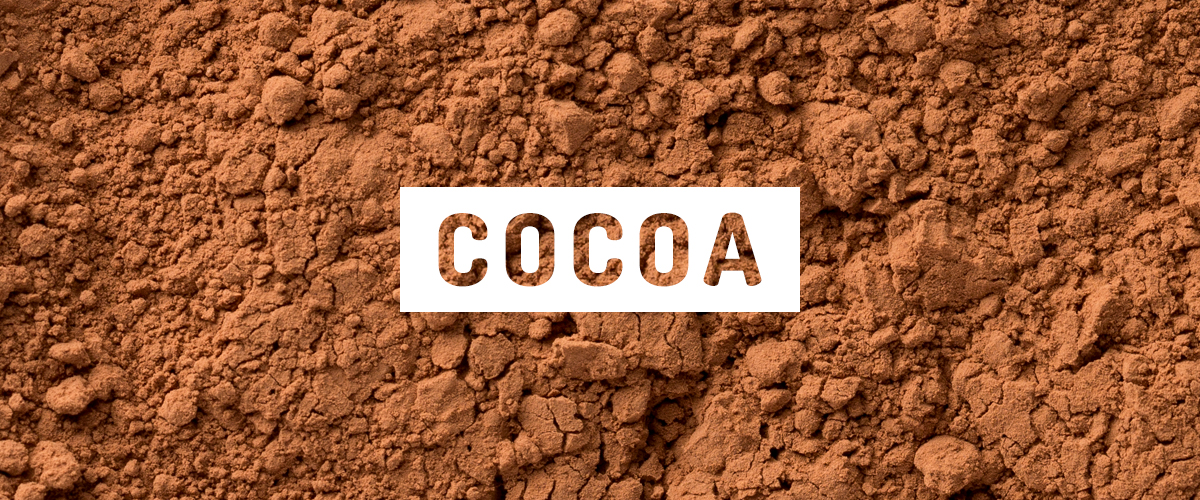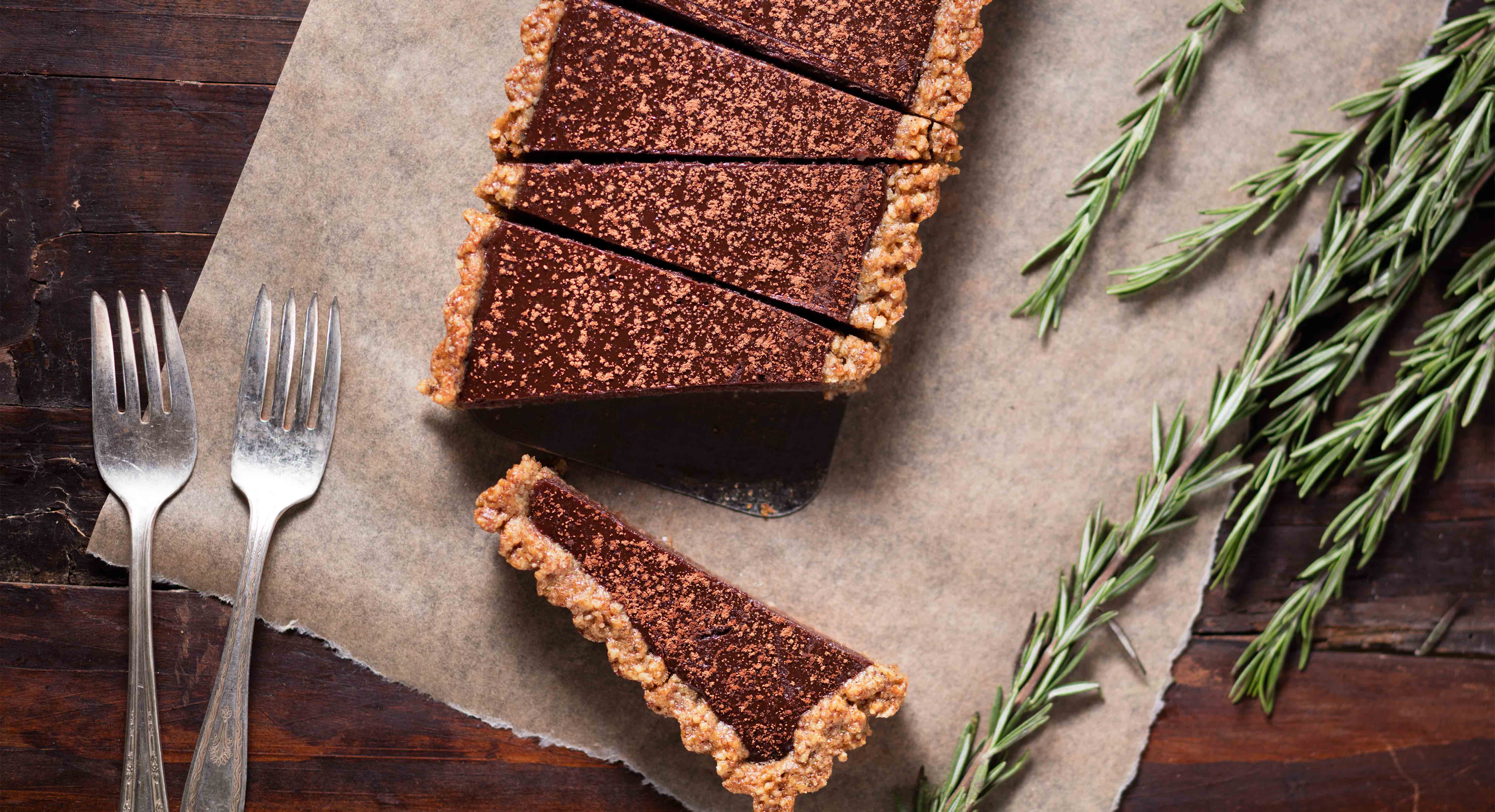A warm, gooey brownie topped with silky vanilla ice cream and a drizzle of hot fudge. Ugh, it’s so tempting you can barely stand it. And all that goodness begins with the bitter cacao bean, the powerful and potent South American plant that chocolate gets its name from. It’s eventually turned into cacao powder—but that’s not the same as cocoa that you fold into brownie batter.
So what distinguishes the two chocolate powders cacao vs. cocoa, other than a few letters? Turns out, quite a bit.
What is cacao?
Technically, chocolate is derived from the cacao plant, which grows pods. When those pods are cracked open, inside there’s a seed that looks a bit like a coffee bean [1]. Jackpot. That’s the cacao bean. Raw, it tastes like a very bitter version of chocolate, and the flavor profile can be different based on the variety of plant, the soil it was grown in, exposure to sunlight, and other factors.
To make cacao powder, which is how cacao is most often used, the beans are processed in low heat to separate the cacao butter (a white, fatty substance that tastes like white chocolate) from the beans. Once the fats have been mostly removed, the beans are ready to be milled into a fine, dark, semi-sweet powder.
Because it’s been processed at such low temperatures, cacao powder retains all of its enzymes, vitamins, and nutrients and is considered “raw.” The temperature at which it’s heated is the primary difference between cacao vs. cocoa powder.
Cacao powder’s proven benefits
You know all of those studies condoning chocolate consumption that pop up in your newsfeed from time to time? They make tons of claims about the health benefits of chocolate—but they don’t explain that almost all of the research on “chocolate” is completed on cacao or cocoa powder, with zero dairy added to it. Here’s the kicker: If there are any milk solids mixed into cacao, it goes from hero to zero really fast, regardless of the cacao vs. cocoa powder argument. Dairy essentially nullifies cacao’s benefits, blocking nutrients from absorption [2]. And even the highest grade of dark chocolate usually has some dairy in it. Hate to break it to you, folks, but it doesn’t matter if it’s a milk chocolate bar or an ultra-dark chocolate truffle—it’s probably not the same stuff that nutrition researchers wax poetic about.
However, cacao powder does have plenty of beneficial nutrients and compounds [3]. Protein, calcium, carotene, thiamin, riboflavin, magnesium, sulfur, flavonoids, antioxidants, and essential fatty acids are all found in trace amounts, along with more antioxidants than most fruits and veggies. And even though cacao isn’t necessarily as irresistible as candy, it still tastes pretty dang good to most chocolate lovers. Here are some of the known benefits of this sweet superfood.
Lowers insulin resistance
Insulin is the hormone that helps our bodies control and break down glucose [4]. Individuals with insulin resistance typically don’t have any symptoms—although weight gain can often be a side effect—but their cells essentially stop responding normally to insulin. That means glucose (sugar) can’t get used by the body for fuel, and builds up in blood. This can, eventually, lead to type 2 diabetes.
Fortunately, diet and exercise can reverse insulin resistance—and cacao plays a powerful role in lowering cells’ resistance. Research shows that 100 grams of cacao daily can improve cell response, as well as lower blood lipid levels.
Improves heart health
Flavanols are naturally occurring substances found in foods like apples, pears, tea, grapes, and blueberries, that promote healthy blood vessel function. Hands down, the most famous flavanol is EGCG (or epigallocatechin gallate), the active compound in green tea. But cacao has some pretty powerful ones too, and they’re specifically useful for increasing heart health and efficiency [5]. A review by the University of Illinois found that these compounds in particular have a positive effect on cardiovascular health and preventing heart disease. In particular, cacao flavanols are excellent at reducing systolic blood pressure [6].
Another study on cacao flavanols found that they work to enhance nitric oxide production, which results in reduced hypertension [7]. Nitric oxide is a vasodilator, meaning it makes blood vessel walls more pliable, so they expand and contract with more ease and flexibility [8]. That takes unnecessary pressure off the vessel walls, which decreases overall blood pressure. Cacao flavanols assist the body’s absorption of nitric oxide, making them even more effective at preventing cardiovascular disease.
Protects against free radical damage
Cacao powder contains nearly four times the antioxidant power of cocoa powder—and more than 20 times the amount found in blueberries. Antioxidants protect cells from free radical damage that occurs as the result of daily exposure to toxins, stress, sun damage, and inflammation [9]. When it goes unchecked, free radical damage can result in chronic disease like cancer.
Improves mood
If you’re a chocolate lover, you’ve probably experienced the mood-boosting benefits of cacao firsthand. And yes, it is because it tastes delightful, but cacao also contains a few compounds that could actually boost our mood. They include:
- Phenylethylamine, which makes us feel more alert and gives us a sense of overall well-being. How? It causes the brain to release endorphins, the same chemicals responsible for a “runner’s high,” which leaves us feeling happier (but without having to break a sweat!)
- Serotonin, which activates the pleasure center in our brain. Not that cacao is nature’s answer to Prozac—it doesn’t have enough serotonin to totally reverse a bad mood, but it can contribute to overall happiness and appetite regulation.
- Andandomide, a “messenger molecule” that plays a role pain tolerance, depression, appetite, memory, and fertility [10]. It could be responsible for those blissed out feelings you get when you bite into a piece of chocolate after a long day.
Other effects of cacao
Then there’s theobromine, a chemical found in raw cacao that acts as both a stimulant and a sedative [11]. Confusing, right? Basically it works in the same way caffeine does to give a short boost of energy, yet it calms the mind, too. In larger doses, it can leave you feeling jittery the same way that caffeine does, and too much of it can be toxic, but not deadly. In fact, theobromine is toxic for dogs, and it’s the thing that makes eating chocolate a big no-no for furry friends [12].
What about cacao butter?
Remember back to the very beginning of the cacao-making process, when the beans are processed to eliminate the fatty oils? Turns out that oil is loaded with omega-6 and omega-9 fatty acids, and when it hardens at room temperature it looks and tastes like white chocolate. Yeah, sounds pretty great to us! Cacao butter is similar to cocoa butter, except that it’s raw (meaning it hasn’t been exposed to high heat). Most cacao butter is food-grade, meaning it’s edible, and can be used as a sweet cooking fat much like coconut oil. You can even use it as a moisturizer—press play to find out how.
What’s the difference between cocoa powder vs. cacao?
Ok, so cacao in all forms is really good for you—but does cocoa powder, the stuff that most of us are used to cooking and baking with, have the same benefits? Not exactly.
What is cocoa powder?
Cocoa powder starts out like raw cacao. First the oils are separated, then the beans are finely crushed. But here’s the big difference—cocoa powder is heated to super-high temperatures, which usually gives it a less bitter taste. And it’s not just the flavor that changes; exposure to higher temps changes the molecular structure, which reduces the enzyme content and lowers the over nutrient content of the powder. Many companies also end up adding fillers like powdered milk and sugar to bring down costs and give it a sweeter flavor, which further detracts from any lingering health benefits.
Baking with cocoa powder vs. cacao powder
Usually, cocoa powder is what’s used in conventional baking. If a recipe calls for cocoa powder, unfortunately, it’s usually not a good idea to swap in cacao—your brownies, cookies, or chocolate cake will come out with a different consistency and flavor, because cacao and cocoa are processed differently.
Nutrition of cacao
Cacao contains quite a few essential nutrients that are beneficial to your health [13]. In just a 2.5 tablespoon serving of Navitas organic cacao powder, you’ll get 8% of your daily iron, 102mg of magnesium, and 291mg of potassium. These nutrients are essential for helping your blood transport oxygen, plus they help regulate our fluid balance and muscle contractions.
Recipes with cocoa or cacao
Ready to get cooking with cacao and cocoa powder? Here are some of our favorite chocolatey recipes that you can make for almost any meal—and because the main ingredient is so dang good for you, you won’t feel guilty about it. Right?
Drinks
Dandelion-Cacao Latte
A detoxifying caffeine-free cuppa that’ll energize you—thanks, cacao nibs!—without the jitters.
Chocolate-Pear Smoothie
Bittersweet chocolate and sweet, fragrant pears are a classic dessert combo—and we love this guilt-free version of the pairing as an energizing morning smoothie! Cacao powder adds tons of nutrients.
Maca Mexican Hot Chocolate
Maca and raw cacao provide a boost of energy to this zesty hot drink. Sip instead of coffee for a chocolatey pick-me-up!
Superfood Chocolate Milk
Lucuma powder and raw honey add a touch of healthy sweetness to this vegan chocolate milk, but won’t cause major blood-sugar spikes. The addition of ashwagandha makes it perfect for afternoon sipping, when you need a little mood pick-me-up.
Desserts
Vegan Chocolate-Covered Frozen Bananas
Creamy frozen bananas make the perfect poolside treat—especially when rolled in sweet coconut or cacao nibs.
Paleo Chocolate Creme Egg
Cadbury creme eggs are only available once a year (thank goodness!), but these Paleo-friendly creme eggs are even better for you and taste just as good as the real, high-fructose corn syrup kind. Bonus: You can make ’em whenever you want.
Double-Chocolate Brownie Bites
OK, technically these vegan brownies have raw cacao and dark chocolate—but we’re pretty sure you’ll forgive us once you taste them. Can you say, “heavenly”?
Dark Chocolate Rosemary Tart
You’ll top this savory-sweet tart with raw cacao powder to wow guests upon serving. But the real star here? The buttery walnut crust.
Salted Chocolate S’mores Tart
Perfect for a celebration where you’re popping bottles—jaws will drop when you unveil this masterpiece.
Paleo 5-Ingredient Fudge
A recipe for those days that you need a little reminder that magic is real. Whip five healthy ingredients together, pop in the fridge, and voila—perfectly sweet fudge.
Chocolate Pecan Pie
We’ve healthified a gut-busting Southern favorite by swapping in a gluten-free chocolate crust and a maple syrup–and–date filling.
Healthified Paleo Twix Bar
Break me off a piece—or five, amiright?
Gluten-Free Chocolate Walnut Cookies
No flour? No problem—these gluten-free fudgy cookies don’t require any at all. Just walnuts, cacao, eggs, and sugar. Yum!
Dark Chocolate Madeleines
You get to whip out your cocoa powder and madeleine pan for these chewy, cake-like cookies.
There you have it! Now you can school everyone you know on the differences between cacao and cocoa powder. Although cacao wins in terms of nutrients and health benefits, cocoa powder still takes the cake when it comes to all your baking needs.
Photo credit: Alicia Cho, Paul Delmont
This article is related to:
Cacao Recipes, Comparison Shopping, Diet, Healthy Ingredients, Nutrition Facts, Paleo, VeganThis site is protected by reCAPTCHA and the Google Privacy Policy and Terms of Service apply.



